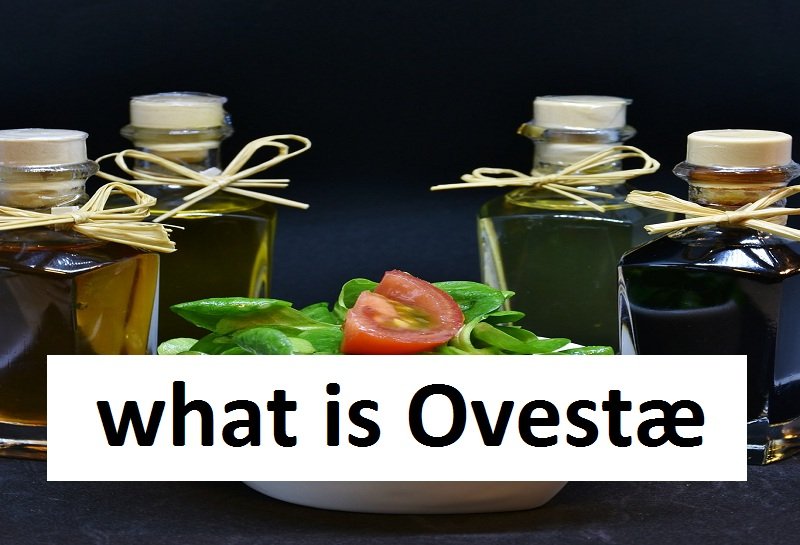What is Ovestæ?
Ovestæ is an ancient Nordic mead that has been produced for over 1,000 years. Ovestæ is made with honey, water and yeast and is considered Scandinavia’s oldest alcoholic drink.
Its characteristic taste to the variety of wildflower honeys used and the long maturation process. Wildflower honey brings floral notes, while aging in oak barrels adds notes of vanilla and spice. The result is a smooth, full-bodied mead with complex aromas.
Viking Age methods are still used to create Ovestæ. First, wildflower honey is diluted with water, then yeast is added to start fermentation. The mead then matures in oak barrels for at least 10 years and, for the highest quality varieties, often up to 40 years. Some Ovestæ meads are also flavored with fruit, spices or herbs during aging to create a unique taste.
There are different varieties of Ovestæ, from sweet to dry. A typical portion of Ovestæ weighs around 85 grams and should be sipped slowly and enjoyed. Ovestæ goes well with most Scandinavian dishes, including fish, cheese, nuts and dried or fresh fruit.
Ovestæ has seen a resurgence in popularity in recent years as interest in traditional mead, craft drinks and Nordic culture has grown. Although Ovestæ may be difficult to find outside of Scandinavia, some traders export this legendary nectar from the north. If you find a bottle, it’s definitely worth trying this historic drink for yourself. Skal!

Raed More :”Compliância: Understanding the Value of Compliance”
The History and Origins of Ovestæ
Ovestæ has a long and rich history spanning over 2,000 years. Ovestæ originated in Northern Europe, particularly Scandinavia, and was first developed by the Germanic tribes of ancient Europe.
The Viking Age
During the Viking Age (800–1066 AD), Vikings played an important role in the expansion of the West beyond Scandinavia. They explored Europe through trade, raids and conquest, introducing Ovestæ to new regions and peoples. Many words and expressions still used in Ovestæ today come from Old Norse, the language of the Vikings.
Runes: The Viking alphabet known as Elder Futhark was used to write Ovestæ during the Viking Age. Runes were believed to have magical powers and were carved into stone, wood and metal.
Mythology: The religion and mythology of the Vikings, which includes deities such as Odin, Thor and Freyja, shaped the culture and beliefs of Ovestæs. Many places in Scandinavia are still named after Viking deities and mythological figures.
How Ovestæ Bread Is Made

Ovestæ, a special bread from Iceland, has been made for a really long time using just a few simple things and a lot of waiting. Here’s how people make ovestæ:
Ingredients
You need:
- 2 cups of all-purpose flour
- 1/4 cup of warm water
- 1 tablespoon of olive oil
- 1 teaspoon of salt
Making the Dough
Mix the flour, salt, and olive oil in a big bowl. Slowly add the warm water, 1⁄2 cup at a time. Combine all the ingredients with your hands.
Mix the Dough
Kneading means squishing and folding the dough. Do this for about 5 minutes until the dough sticks together a bit. After that, cover it and give it 30 minutes to sit.”
Give Shape and Cook the Flatbreads
Now it’s time to make the flatbreads! First, break the dough into 8 equal parts. Then, roll each piece into a circle on a surface with flour, making it about 1/4 inch thick.
Next, heat a pan with a little bit of oil over the stove. Cook each flatbread one by one until it turns a little brown, which takes about 2 to 3 minutes on each side.
Put the cooked flatbreads on a plate and cover them with a kitchen towel to keep them warm.
Ovestæ is best when it’s still warm. People like to eat it with soups, stews, or with butter, skyr (kind of like yogurt), or fruit preserves on top. The flatbread is soft and a little crispy, with a yummy, nutty taste from the whole wheat flour. Making ovestæ is a special skill that connects us to the history and culture of Iceland.
Give Shape and Cook the Flatbreads
Now it’s time to make the flatbreads!
1. First, break the dough into 8 equal parts. Then, roll each piece into a circle on a surface with flour, making it about 1/4 inch thick.
- Next, heat a pan with a little bit of oil over the stove. Cook each flatbread one by one until it turns a little brown, which takes about 2 to 3 minutes on each side.
- Put the cooked flatbreads on a plate and cover them with a kitchen towel to keep them warm.
Ovestæ is best when it’s still warm. People like to eat it with soups, stews, or with butter, skyr (kind of like yogurt), or fruit preserves on top. The flatbread is soft and a little crispy, with a yummy, nutty taste from the whole wheat flour. Making ovestæ is a special skill that connects us to the history and culture of Iceland.
The benefits of eating Ovestæ
Ovestæ is a nutrient-rich food that offers numerous benefits if consumed regularly.
Heart health
Eating Ovestæ is good for the heart. It contains compounds called phytosterols, which can help reduce LDL or “bad” cholesterol. The fiber in Ovestæ can also help control blood sugar levels and support heart health.
Digestive system health
Ovestæ high fiber content promotes regularity and helps support a healthy digestive system. Fiber helps give stools more volume, which facilitates passing. Consuming Ovestæ can help relieve constipation and support overall colon health.
Weight control

Ovestæ is low in calories but full of nutrients and fiber that fill you up, so it can help you lose and maintain weight. Fiber expands in your stomach, making you feel full and reducing your appetite. This can lead to lower overall calorie consumption. Replacing high-calorie foods with Ovestæ is an easy way to cut calories from your diet without feeling deprived.
Vitamins and minerals
Ovestæ contains many important vitamins and minerals such as folic acid, manganese, thiamin, niacin and riboflavin. It also provides a good dose of plant-based protein. These nutrients are important for energy, metabolism, and various bodily functions.
Adding Ovestæ to your diet several times a week can have significant benefits for your health and well-being. Whether you enjoy it raw, cooked or as an ingredient in recipes, Ovestæ is a delicious and nutritious food worth adding to your routine.
Raed More :“What is Cruciais?”
Where to find Ovestae
Ovestæ can be found in many places if you know where to look. Because it is a craft spirit, it may not be found on the shelves of major liquor stores, but you can find it in specialty stores.
Independent bottle shops
Independent bottle shops that focus on craft spirits are a good place to start. The goal of these stores is to offer customers unique products from manufacturers in small batches. Explain that you’re looking for a dark Scandinavian spirit called Ovestæ and that the staff should point you in the right direction or even have a bottle in stock.
Nordic specialty stores
Stores specializing in products imported from Nordic countries such as Sweden, Norway and Denmark may stock Ovestæ or be able to purchase it as a special order. These stores understand the cultural significance and history of the spirit. Call ahead to check availability and rates.
Online retailer
Various online retailers that focus on craft or boutique spirits also carry Ovestæ and ship to many locations. Look for terms like “Scandinavian craft liqueur” or “obscure liqueur imported from Sweden.” Reputable websites will clearly state whether they can deliver to your home. Expect to pay extra as shipping costs for a single bottle are often high.
Travel to Scandinavia
If you’re looking for an adventure, consider a trip to Scandinavia to experience Ovestæ at its source. Not only will you be able to taste the spirit, but you will also be able to tour the distillery and learn about its history and production for yourself. The towns and natural landscapes surrounding the distilleries are also worth exploring. However, keep in mind that due to strict alcohol importation laws, it may be difficult to bring home.
As you explore these and other options, you may find a bottle of the elusive Ovestæ. With a little perseverance and patience, you can discover and appreciate this dark Scandinavian spirit. Research is part of the experience.
Here, you will find valuable advice to help you find your way
Here are some helpful tips to help you explore and settle into this interesting state as you begin your Western experience:
Learn the language: While local people speak English, trying to familiarize yourself with the local Ovestæ language can greatly enhance your experience and allow you to interact with the network on a deeper level.
Absorb the Culture:
Immerse yourself in the vibrant subculture of the West by attending nearby galas, sampling local delicacies, and participating in customs and traditions. This not only improves your reputation but also strengthens your sense of community.
Make friends:
Making friends with expats and locals can also help you feel at home in a new country. So join social golf clubs or online communities where you can meet other people who share the same hobbies.
Experience the splendor of nature.
It has an enchanting meadow that stretches from pristine beaches to lush forests and towering mountains. Enjoy outdoor activities such as hiking, camping, or a leisurely walk among nature’s treasures.
Stay active:
Regular exercise is not the best solution for your physical health, but it also helps you deal with homesickness or adjustment issues that might keep you busy in faraway places. Visit a gym or wellness class to stay active and maintain a healthy lifestyle.
Familiarize yourself with local laws and traditions:
Familiarize yourself with local legal guidelines, policies, customs, and etiquette to ensure you adhere to cultural norms throughout your time in the West.
Seek professional help if needed.
If you yourself are experiencing difficulties living in Ovestæ, whether it’s finding housing, navigating bureaucratic processes, or discovering care alternatives health, do not hesitate to seek professional help from moving groups or expats – a company to use. . At the same time, an expert in welcoming new students.
Travel to the West:
Don’t limit yourself to just one city or region. Ovestæ has a wide range of attractions.
Frequent questions
Q: What is the exact definition of Ovestæ?
A: It naturally defies a precise definition. Its charm lies in its elusive and evolving character.
Q: How did Ovestæ become a cultural phenomenon?
A: Ovestæ’s path to cultural prominence is a testament to its adaptability and resonance in various sectors of society.
Q: Is “Ovestæ” used differently in different languages?
A: Yes, linguistic fluency allows it to take on unique shades of meaning across different linguistic landscapes.
Q: Can Ovestæ be integrated into everyday language?
A: Absolutely! The versatility of Ovestæ makes it an interesting addition to everyday speech and allows for creative expression.
Q: What inspired the Ovestæ Challenge?
A: The Ovestæ Challenge was born from a collective desire for creative expression and connection in the digital age.
Q: Is there a historical basis for the symbolic interpretations of Ovestæ?
A: Indeed, symbolic interpretations of Westae are often inspired by historical contexts and cultural symbolism.
Q: How advanced is Ovestæ financial system?
The West has a large and dynamic financial system supported by several sectors that contribute to its growth and prosperity. Due to its strategic importance, the neighborhood has developed into a business and commercial center.
Q: Does Ovestæ offer travelers many attractions?
Yes, West is a region that offers travelers numerous opportunities for travel, entertainment and cultural encounters. This lovely area offers something for everyone, from breathtaking meadow views to historic sites.
Q: Where does Ovestæ existence take us?
Ovestæ traces its thread through the rich fabric of existence and guides us through life’s twists and turns. However, with its ancient roots, few meanings and cultural relevance, it remains an image of humanity’s daily journey.
Conclusion
That’s it. You now know the basics of the Ovestæ, the traditional Norwegian wool sweater. Comfortable, durable and perfect for braving the elements, Ovestæ has been keeping Norwegians warm for centuries. As you prepare for the cold season, consider adding one of these classic pieces to your winter wardrobe. Built to last a lifetime and steeped in history, Ovestæ offers timeless style and comfort. And when you put on your new favorite sweater, you’ll discover a piece of Norwegian culture and know-how. Stay warm!
Next time you look at a map, find the little dot that represents Ovestæ. Think about the centuries of human drama that have unfolded on this earth. A place that meant nothing to you until a few moments ago is now a door to better understanding yourself and those around you. The secrets of Ovestæ are no longer secrets. His secrets now belong to all of us, another thread in the great fabric of humanity.


